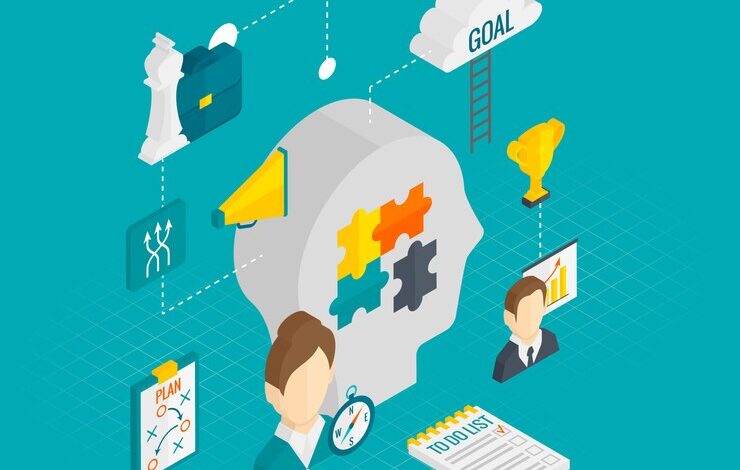The Role of Critical Thinking in Effective Problem Solving

The Role of Critical Thinking in Effective Problem Solving, Success in any sector in the modern world depends on being outstanding in Problem Solving and Decision Making. You are not born with these skills, but one can learn with organised techniques. Many Management Courses stress these skills, therefore arming people with the means to negotiate challenging tasks successfully. Join us as we explore how critical thinking can help you improve these essential skills and teach you to become more proficient in analysing things.
Table of Contents
- Understanding Critical Thinking
- The Intersection of Critical Thinking and Problem Solving
- Developing Critical Thinking Skills
- Conclusion
Understanding Critical Thinking
Critical thinking is the precise, fair, and honest analysis of facts and arguments. It involves conceptualising, evaluating, and synthesising data from many sources to develop reasonable decisions. Basically, it’s the capacity for reasoned thinking and well considered decision making.
The Intersection of Critical Thinking and Problem Solving
Good problem solving calls for not only a set of actions but also a mindset that questions presumptions, takes several points of view into account, and critically examines data. Here’s how critical thinking improves each stage of problem-solving:
Identifying the Problem
Critical thinking motivates people to look beyond obvious problems and find underlying causes, helping them precisely identify the solution. This entails challenging initial presumptions and ensuring that the true issue is under control rather than only its symptoms.
Gathering Information
Once the issue is found, critical thinking helps organise pertinent data. It guarantees accuracy and dependability of the gathered material. Critical thinkers can distinguish between trustworthy sources and those that are biased and untrustworthy.
Analysing the Information
Critical thinking is crucially important to analysis. This stage consists of dissecting the material into doable chunks, grasping the connections among multiple pieces of data, and spotting trends or patterns. Critical thinking highlights the background of the issue and helps one view the whole picture.
Generating Possible Solutions
A critical mindset makes coming up with ideas a creative and thoughtful process. Critical thinkers examine a broad spectrum of potential answers, including unusual or creative ones. Examining possible outcomes and viability, they balance the advantages and disadvantages of every choice.
Evaluating Solutions
Evaluation determines whether every approach could be quite successful. With critical thought, you can be sure that this evaluation is complete and unbiased, using logic and real-world examples. Comparing approaches and considering their consequences aids in determining the most practical option.
Implementing the Solution
Without proper implementation, even the best ideas could fail. This phase is supported by critical thinking since it guarantees a well-organised, reasonable, flexible approach to meeting unanticipated difficulties. It entails ongoing observation and evaluation to create required changes.
Reflecting on the Process
Critical thinkers think back on the whole process of solving a problem after they have put the answer into action. They examine what worked and what didn’t, note lessons discovered, and consider how these realisations might be used to address the next challenges.
Developing Critical Thinking Skills
Being able to think critically is not a natural skill, it is something that can be learned and improved over time. Here are many practical techniques to improve critical thinking skills:
Ask Questions
Ask questions often to encourage inquiry. Why is this so happening? What are the root causes? List the substitutes. Inquiring questions promotes deeper knowledge and allows one to investigate several sides of a subject.
Engage in Reflective Thinking
Spend some time analysing your decisions and thought processes. Reflective thought helps you to see your prejudices and sharpens your logical ability. Jot down your observations and ideas in a notebook.
Seek Diverse Perspectives
Open yourself up to different points of view and think about them without bias. Interacting with many points of view expands your knowledge and allows you to see flaws in your own ideas.
Practice Problem-Solving
Participate often in activities that require problem-solving. These could be real-life difficulties, strategic games, or riddles. The more you practise, the more your critical thinking muscles grow.
Learn from Others
See how effective problem-solvers approach difficult tasks. Read books, go to seminars, and join in critical thinking and problem-solving-oriented debates.
Use Structured Thinking Tools
Use mind maps, flow charts, and decision matrices—among other tools and frameworks—that support disciplined thought. These tools help you organise your ideas and find better ways to solve problems.
Conclusion
Good problem-solving depends mostly on critical thinking. It gives people the tools to negotiate difficult circumstances, make wise judgements, and create original ideas. Developing and using essential thinking talents will help us improve our problem-solving capacity and approach obstacles with assurance and clarity. Critical thinking is not only a tool but necessary for success when challenges are becoming increasingly complicated.
Learn to effectively lead a team with The Knowledge Academy courses.



